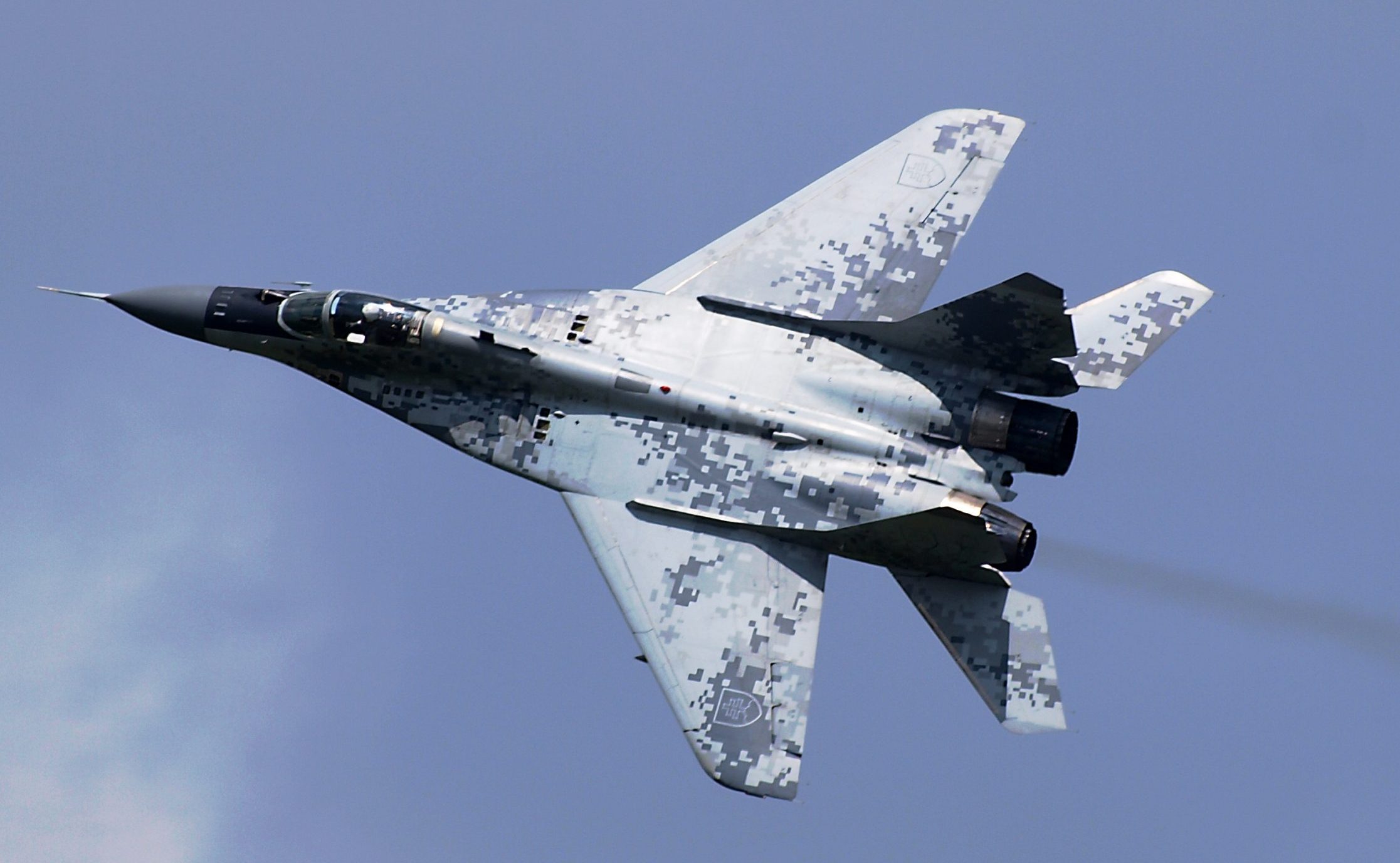
The recent announcement made by the Slovak government of Eduard Heger about gifting the Slovak Air Force’s entire fleet of fighter jets to Ukraine leaves the NATO member state’s defensive capabilities in tatters. As magnanimous as the decision might seem towards their Ukrainian neighbors fighting a full scale invasion, it is clear that the move is little less than gesture-politics meant to please Western public opinion and allies.

Prime Minister Eduard Heger (C) with Minister of Defense Jaroslav Nad (R) at a press conference announcing the gifting of the Slovak Air Force’s MIG-29 fighter jets and BUK air defence missiles to Ukraine. Facebook Eduard Heger
As noble it may seem, the decision to send all thirteen old Soviet-manufactured MIG-29s, that are in various stages of disrepair, to their embattled neighbor is hugely unpopular among the Slovak public. As a matter of fact, so is the care-taker government of Prime Minister Eduard Heger. If polls are to be trusted, the governing OLANO party has only enjoyed a 6 to 7 percent support among the Slovak populus. The government that was forced to legislate from minority since their liberal coalition partners SaS have turned their back on them, have faced a further predicament when in December 2022 they have lost a vote of no confidence in Parliament.
Instead of resigning at once as is common practice in such circumstances, Prime Minister Heger had pushed the date of early elections as far back as September 2023, only four month before his government’s full mandate would have expired anyway. Then only to make things even less transparent, Heger had decided to abandon his own party, OLANO, this month and establish a new one called Demokrati. He was joined by his scandalous foreign minister Rastislav Kácer, who is widely considered to be the most antagonistic and divisive personality in Slovak politics of the last decade, known for casually comparing domestic political rivals to Nazis, while at the same time upsetting neighboring Hungary with entirely fictitious accusations of territorial revisionism.
The magnitude of the decision taken by the caretaker government has raised questions about the legality of the weapons-transfers, some even calling the move a coup. While according to Defense Minister Jaroslav Nad the departure of the aging MIGs, the majority of which is not even flight-worthy, will not represent a major decrease in military capabilities, compounded by the fact, that last year Slovakia had gifted their S-300 air defense batteries to Ukraine (reportedly destroyed by the Russians before they could be deployed), and is about to send some of its BUK air defense systems the same direction, have sent tanks and armored transporters from its arsenal, the country will effectively have a fighting force only on paper.
Given that the country’s economy is in its worst shape since it declared its independence in 1993, the acquisition of modern military aircraft and infantry fighting vehicles will be an uphill struggle. Although the government in Bratislava has ordered 14 of the latest generation F-16 fighter jets from the USA costing 1.6 billion euros, and furter 153 CV-90 infantry fighting vehicles for the kingly some of 1.7 billion euros, it is still not clear how they intend to finance such an expensive acquisition in order to replace their old stocks.
It seems though that the Heger government is not overly worried about Slovak public opinion, nor the state of the economy for that matter, while it enjoys Washington’s support, and is celebrated as a hero for its military help for Ukraine in Western newspapers. Nor did they flinch when the Russian Embassy in Slovakia warned that the decision to send such potent weapon-systems to Ukraine “will have consequences”. Yet there is a plausible explanation as to why Heger and his allies appear to be unconcerned: that is because they are.
Slovakia’s greatest economic asset was arguably its low public debt that stood at only 48 percent in 2019. After the elections in February 2020, the debt had risen close to 60 percent by the end of the year, in line with numerous other countries, where the global pandemic wreaked havoc with the economy. Yet critics say that the government has no plans to reduce the increased levels of inflation, and this might not be a mere ineptitude on the part of the Heger government, but a conscious strategy to undermine their successors, who are likely to gain power in the September elections.
Slovakia recorded a Government Debt to GDP of 63.10 percent of the country’s Gross Domestic Product in 2021. source: tradingeconomics.com
Government Debt in Slovakia increased to 61296 EUR Million in the fourth quarter of 2022 from 59644 EUR Million in the third quarter of 2022 source: tradingeconomics.com
Polls project the current government parties’ arch-rival, Robert Fico’s SMER to win the next elections, with a potential coalition partner, Peter Pellegrini’s Hlas, as close second. Both current government parties, OLANO and Demokrati poll at around 5 percent, which is the electoral threshold in Slovakia. Given the chances of returning to power, Heger and his allies have little to no incentive to reduce public debt, or to introduce contractionary monetary policies to tackle inflation.

Photo: Facebook Rastislav Kácer
In fact the only conceivable explanation to the current political anarchy in Slovakia is the logic employed by the successive Hungarian governments between 2002 and 2010. In as little as 8 years the governments lead by Ferenc Gyurcsány and later by Gordon Bajnai have increased public debt from the 55% that the first Orbán government had left behind to a staggering 80%. They have also taken a 20 billion euro IMF loan in return for crippling austerity measures, and left the country near bankruptcy. After the 2010 elections, this has presented the second Orbán government with a economic and social “mission impossible”, the consequences of which are still being felt due to Hungary’s current public debt of 72%, that is still the highest in the region.

Photo: Facebook Gordon Bajnai
Some of those politicians responsible for the decisions that have devastated Hungary during the socialist governments have been rewarded with lucrative positions at U.S. think tanks. Such is the case of former Hungarian PM Gordon Bajnai, who is to date a member of Globsec, a powerful U.S. financed NGO, which Slovak Foreign Minister Rastislav Kácer also happens to be a member of. This could explain the near-overzealous generosity with which members of the Slovak governments play the junior party to the U.S.-lead international effort to arm Ukraine. Furthermore, this could also explain the speed by which, despite serious concerns about the legality of past and recent arms shipments from Slovakia, President Zuzana Caputová is signing these deals. In the past she had also worked with political lobby NGOs like the Open Society Foundations, Greenpeace or USAID.

President Zuzana Caputová with Joe Biden in Warsaw. Photo: Facebook Zuzana Caputová
Whoever is going to take over from Eduard Heger in September, they will certainly have their work cut out to rectify the consequences of the Slovak government’s scorched earth policy. Ordinary Slovak citizens will likely be the ones picking up the bill for the shambolic years of the last Slovak government. The current ruling elite has come to power with a populist, anti-corruption manifesto, but are now leaving the country amid a political and economic crisis that will leave the country under the Tatra Mountains reeling from its consequences for years to come.
Featured photo: Wikipedia